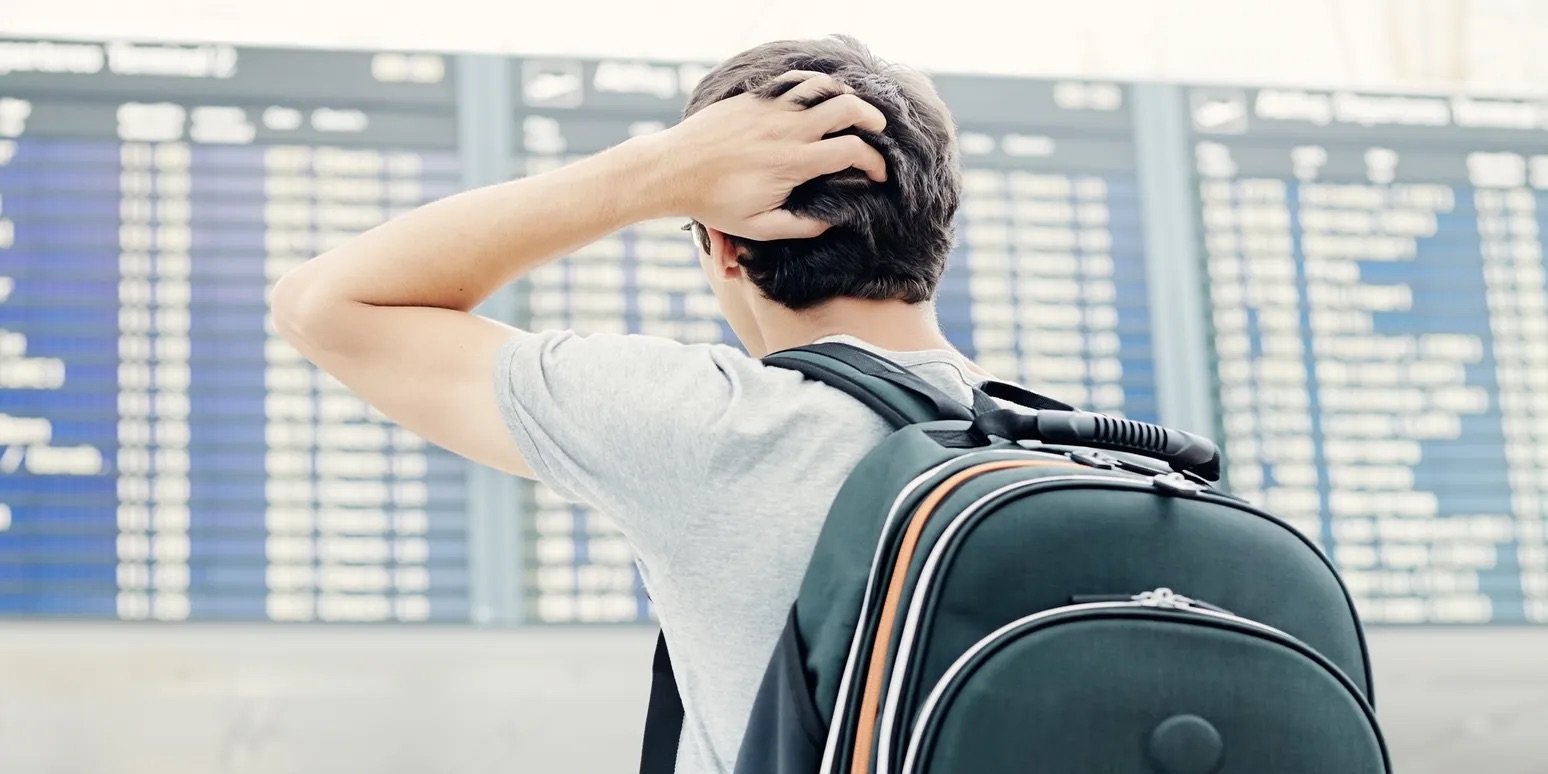Overview
NAVIO is a personalized AI airport assistant that breaks down language barriers. From finding the right gate to getting real-time boarding alerts, NAVIO ensures travelers receive the right information at the right time—in their language and get on board with confidence.
NAVIO
-
Experience Design (Spring 2025)
-
Figma, Adobe Photoshop, Adobe Illustration
-
8 weeks
The Problem
Language barriers create significant obstacles for non-native speakers at airports. Inadequate signage, inconsistent procedural communication, and the absence of real-time, multilingual updates result in confusion, missed checkpoints, and a reluctance to seek assistance.
Research
Our research revealed that travelers—especially non-native speakers—face significant stress and confusion during airport procedures. 80% of respondents cited language barriers as a key source of frustration, particularly at check-in, security, and boarding. While travel frequency varied, every participant expressed interest in an airport assistance app, showing strong demand for better support. Notably, 70% preferred real-time updates on flight status and gate changes via mobile, and many emphasized the need for assistance in their preferred language. These insights highlight a clear opportunity to improve the airport experience through real-time, multilingual support. (Sources: Google Forms and WowFare)
Competitive Analysis
I analyzed current travel apps and found that while they offer helpful features like real-time updates and wayfinding, they often lack strong language support, offline access, and a seamless user experience. Many also hide essential features behind paywalls or feel outdated, revealing an opportunity for a more inclusive, real-time, and accessible solution.
User Interviews
I conducted user interviews with an older traveler visiting family overseas and an international student studying abroad. These conversations revealed the emotional strain of navigating airport procedures, with stress around unclear signage, language barriers, and overwhelming information. Both emphasized the need for clear, step-by-step instructions in their preferred language and real-time support, highlighting significant gaps in current airport systems that leave travelers feeling uncertain and anxious.
User Persona - Jennifer
I created a user persona based on interviews with an older solo traveler, Jennifer, who was flying to Vietnam to visit her family. Her experiences highlighted challenges like overwhelming signage, fast-paced announcements, and confusing airport procedures. These insights inspired us to design an app that acts like a personal airport assistant — providing step-by-step guidance, real-time updates, and language support to help travelers navigate with ease and confidence.
Journey Map
To better understand Jennifer’s airport experience, I mapped her journey from arrival at the airport to boarding her flight. The journey map highlighted key emotional moments — from initial anxiety at self-service kiosk check-in, to confusion navigating security, to relief after reaching the gate. This map was critical in shaping how NAVIO would step in as a calming, personal assistant throughout each stage of her trip.
POV Statement
[Non-native travelers] need a way to confidently navigate unfamiliar airports because current systems overwhelm them with unclear signage, fast announcements, and language barriers—leaving them anxious, confused, and at risk of missing important steps in their journey.
How Might We…
Deliver real-time updates in the traveler’s preferred language to reduce confusion and missed information?
Simplify airport navigation with visual, voice, and AR guidance tailored to non-native speakers?
Build a clear step-by-step flow that eases anxiety during high-pressure moments like check-in or gate changes?
Support communication between travelers and staff when language is a barrier?
Design Concept
We will design a personalized multilingual airport experience that assists travelers through key procedures with real-time support, helping them navigate confidently and communicate more easily with airport staff when needed.
Key Insights
Our research, including surveys and user interviews, revealed key challenges parents face, such as mental load, task management struggles, and communication gaps. Parents expressed the need for a more streamlined way to coordinate responsibilities without relying solely on memory or scattered notes. These insights provided a strong foundation for sketching, ensuring the app addresses real needs with intuitive and collaborative solutions.
Low-Fidelity Sketch
I began with low-fidelity sketches to focus on creating a simple, intuitive experience — especially for non-native speakers. The design centered around being a personal airport assistant, starting with easy location and language setup. From there, features like real-time alerts, a supportive AI chatbot, AR navigation, and accessibility tools such as voice guidance and vibration alerts were mapped out to help travelers move through the airport with ease and confidence.
User Testing & Feedback
User testing was conducted to identify usability challenges and ensure the app delivers a clear, seamless experience without overwhelming travelers. Through direct feedback, we refined the flow of information, simplified navigation, and prioritized essential features. This careful balance allows NAVIO to act as a calm, supportive assistant — providing real-time assistance without creating cognitive overload or unnecessary complexity during the airport journey.
High-Fidelity Prototype
The high-fidelity prototype brings the NAVIO experience to life — blending intuitive navigation, real-time updates, and multilingual support into one seamless flow. Every detail is designed to reduce stress and empower travelers with clarity and confidence throughout their airport journey.
NAVBOT Self-Service Kiosk - Flow Chart
The flow chart illustrates the step-by-step process at the self-service kiosk, starting with language selection and then guiding travelers through a conversation with NAVBOT for personalized assistance.
NAVBOT Self-Service Kiosk
For travelers without the app, NAVIO kiosks offer instant support across the airport, with staff nearby to assist if needed.
NAVIO Language Interpreter
Users will begin by selecting their preferred language for translation. They can choose to speak into the mic or type their message, and the chat will automatically translate the response. Staff will be on standby to assist.
Storyboard
Branding
NAVIO’s branding uses vibrant yellow, bold blue, and deep black to create high contrast for better accessibility. The color palette is friendly, eye-catching, and designed to make navigation easy for all travelers.
Key Takeaway
This project showed me how deeply language and clarity impact a traveler’s sense of control and comfort. It reminded me that even small design choices can ease anxiety and create a more inclusive journey for everyone.







